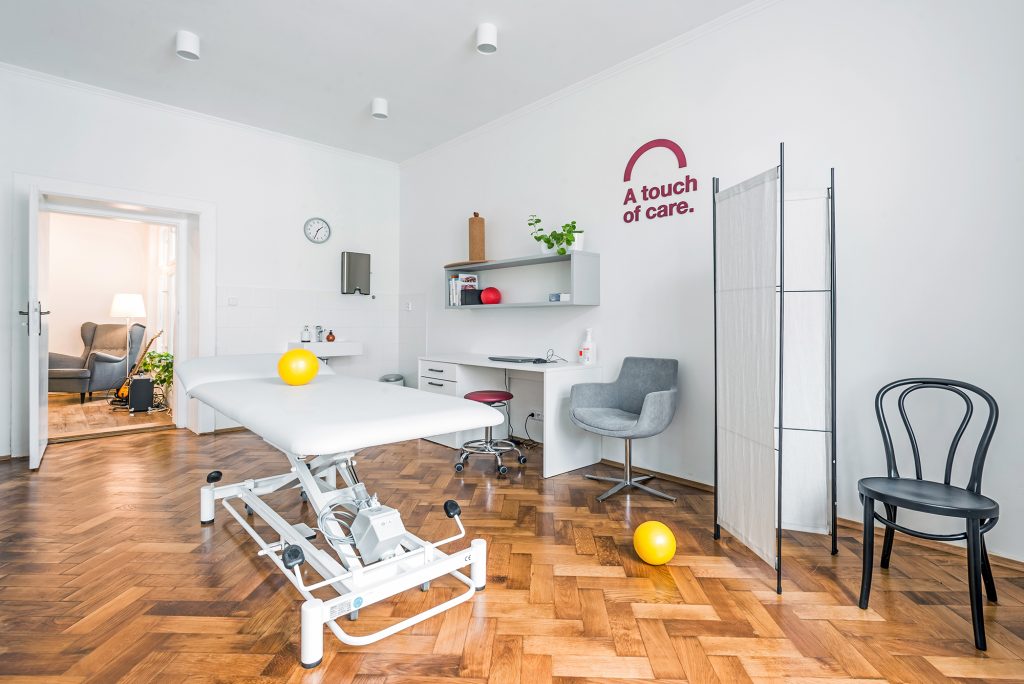Physiotherapy for Headaches
Anyone who suffers from frequent headaches knows how disruptive they can be. There are about 300 potential causes of headaches, but most can be classified into one of three main categories: migraines, headaches related to the cervical spine, or tension headaches.
How can physiotherapy help?
At Fyzio Svět, treatment always begins with an assessment to determine the cause of your headaches. After the diagnosis, your physiotherapist will explain the therapy plan. In some cases, it’s important to treat areas beyond the cervical spine to prevent the issues from recurring. Typically, treatment involves relieving muscle tension, resolving joint blockages, and using exercises to properly align the spine and strengthen muscles for proper activation. The spine is then stabilized with special exercises that activate deep muscles, gradually improving posture and restoring full range of motion without pain or restriction.
Migraines
A migraine manifests as an intense, throbbing pain on one side of the head, often accompanied by nausea, and sensitivity to light or noise. An episode can last from several hours to up to three days. Some people experience what’s known as an aura (visual, sensory, or motor disturbances) before the onset of pain, such as seeing bright spots or dark areas in their vision, or having difficulties with movement coordination or speech. Recent findings suggest that structures in the cervical spine can also influence migraine attacks, and targeted physiotherapy can help with these.
Headaches related to the cervical spine
One of the most common causes of headaches is tension and strain in the cervical spine. Cervical spine issues are often linked to problems with the temporomandibular joint, manifesting as tension in the jaw muscles, clicking in the joint, nighttime teeth grinding (bruxism), or increased psychological stress. Headaches related to the cervical spine typically cause pain in the back of the head, temples, forehead, or behind the eyes. The good news is that with the right physiotherapy, permanent relief from these headaches is possible.
Tension headaches
Tension headaches can vary in both intensity and frequency. They are usually described as a dull or pressing pain that affects the whole head or certain parts of it. Unlike migraines, tension headaches rarely come with additional symptoms like nausea or sensitivity to light. Tension headaches can sometimes originate from distant areas of the body, such as the pelvis, coccyx, or the digestive system.
Possible causes of headaches:
- Sedentary lifestyle and poor workplace ergonomics
- Post-injury conditions involving the cervical spine or post-car accident (whiplash syndrome)
- Temporomandibular joint dysfunction
- Changes in breathing patterns (chest breathing)
- Lifting heavy objects, improper exercise, or sports strain
- Poor posture
- Inappropriate pillows
- Coccyx and pelvic floor disorders
- Stress
- Dehydration
Serious cases when you should seek immediate attention:
n a small percentage of patients, headaches can be caused by serious conditions that require thorough examination and often urgent professional help. The following symptoms may indicate emergencies such as stroke, brain tumors, aneurysms, meningitis, or other systemic diseases. If you experience any of the following, we strongly recommend consulting your doctor immediately:
- Pain is so intense it’s unlike any previous headaches.
- Physical activity, exertion, or coughing noticeably worsens the headache.
- Symptoms don’t respond to prescribed treatment.
- Sudden and rapid onset of pain.
- Neurological symptoms like motor weakness, poor coordination, memory loss, dizziness, falls, or speech difficulties.
- Accompanying symptoms such as fever or weight loss.







